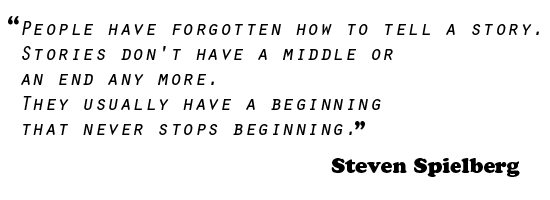I have heard it often said that a trial is the search for the truth and that every trial tells a story. But what seems to be neglected is what is the “story” and the need to advance that story in its telling to the jury from voir dire through summation. What is gaining popularity is a recognition of the value of the story, but little discussion on the elements of a story. Not just the plot, the characters, etc, but more.
The elements of a story have been around a long, long time, and it was Aristotle in his “Poetics” where he puts the elements down in print.
Aristotle explained the elements within the context of a play, and usually it was a comedy or a tragedy. But the five elements of the story were:
- Setting. 2. Character. 3. Plot. 4. Dialogue. 5. Thought.
The movie elements that folks have become accustomed to for story lines follow the three-act structure of Act 1 (characters introduced, heroes and villains) with an introduction of the “hook” which is often the inciting incident and the plot point. I would compare this to a jury voir dire and opening.
Act II is the Confrontation and would compare to taking of evidence and witnesses. It will continue the plot and may have some subplots, with the developmental escalation to the ultimate resolution with a pivotal point in which the main character or hero changes his direction. Think of a life doing fine when the traumatic accident changes everything, and now we witness the struggle to prevail.
Act III is Resolution. Some might say the Summation is the resolution, but I would say Summation and Deliberation are the resolution. Can’t have one with out the other with the summation tying up the loose ends and connecting the dots pointing the plot point to the jury’s verdict.
This is just a shell, a template so to speak, to help one understand that a jury trial is not just a story with a beginning, a middle and an end akin to legal writing which we all know is boring, boring, boring.
But let us look to Aristotle’s five elements to flesh out the three acts a little more. And BTW I am talking about a “good” story.
Focus on that main character, the plot/theme of the story, and developing that character throughout voir dire, opening, case in chief, witnesses, evidence, exhibits, cross-examinatin, rebuttal, summation.
Focus on how you establish a setting by setting seeds during jury selection with discussion questions, not an interrogation of yes/no questions, wouldn’t you agree, all raise your hands type stuff. Do you think putting jurors on the spot during your first encounters helps to build a rapport, a trust that you are the “go to” person, the guide?
‘The first essential, the life and soul, so to speak, of a story, is the Plot,’ wrote Aristotle. So tie that plot and theme with your witness selection, your evidence, individually and collectively. Some will be complete in and of itself, others will play a bit part on an important element of the story. Rabbit trails and other distractions need to be avoided.
Characters. Now, this goes more to your initial case selection, but also what and how you present that character. Unlike fictional stories, a trial is a true tale. Aristotle spells out four qualities of the main character: 1. They must be good; possess redeeming qualities, like overcoming the tragedy of their injuries, that wins the respect of the readers, or in this case the jurors. 2. These qualities must be appropriate. 3. The hero must be believable and realistic. 4. And they must be consistent with that character. Some use framing your case and evidence and witnesses consistent with that theme and story.
Stories reveals discoveries. Moments when the client/hero makes discoveries about himself on his journey to recovery. And as his or her mettle is tested , they will come out on the other side of that reversal and discovery. Pre-injury vs. trauma vs. recovery vs. coping with the limitations.
KISS! Keep it super simple! The plot must be simple, and in any trial both sides wish to portray, their client as the hero or victim with the other side aiming for the same thing. The facts and circumstances will dictate which is which. But remember, the client is the protagonist with the other party the antagonist, eg hero vs. villain.
This is simple stuff, but sometimes you can lose track of it in the tall grass when preparing for trial.
Some call the plan as framing your case, having a theme, etc. But it is a story, a simple story of a life changing event and resolution, solution, recovery.
See, earlier post:

